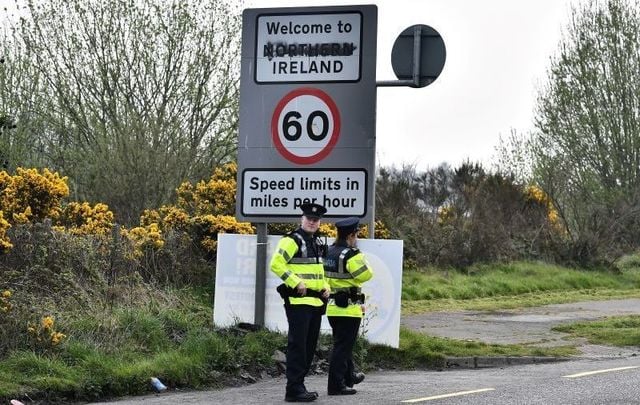With Brexit’s third deadline quickly approaching, the Irish border remains the main holdup
After being delayed twice this year already, Brexit is supposed to officially happen later this month on October 31. A deal dictating the terms of departure has yet to be announced, though recent reports suggest that one could be coming soon.
Read More: Why is the Irish border where it is?
The main issue that remains throughout the seemingly neverending Brexit process is the border between Northern Ireland and the Republic of Ireland.
With the UK and Ireland both being members of the European Union, there is currently no need for customs checks on imports and exports between the two nations as they're both part of the single market and customs union.
After Brexit, the border between the Republic of Ireland and Northern Ireland will be the only land border the UK has with an EU state that has yet to come to an agreement on how the border will be monitored. (In late 2018, the UK and Spain came to an agreement on Gibraltar's border. Gibraltar is a British Overseas Territory with a .75 mile border with Spain. )
As such, some sort of agreement must be decided upon to dictate how trading will unfold.
Additionally, the logistics of a hard border along the roughly 300-mile border that weaves almost unnoticed between Ireland the North seems logistically impossible.
British or Irish, no one appears to want a hard border on the island of Ireland, but the parties involved cannot seem to agree on a way around it.
Read More: Irish armed police now patrol Northern Ireland border
At the heart of the issue is the 1998 Good Friday Agreement between the UK and Ireland which says a hard border cannot be introduced on the island of Ireland in the hopes of preventing a return to violence similar to that of the 30-year era of The Troubles, which saw thousands of people die in sectarian conflict.
A “backstop” was proposed to avoid a hard border which stipulates that the UK would remain in a customs union with the EU until a solution is found. Brexiteers, including Prime Minister Boris Johnson, are opposed to the idea of a backstop as it does not permit for a clean break from the EU.
This week, the BBC outlined ways in which the backstop could be implemented:
A Northern Ireland only backstop
"This is what the EU originally proposed.
"It would involve Northern Ireland alone remaining in the EU's single market and customs union, leaving Great Britain (England, Scotland and Wales) free to strike trade deals.
"But the DUP - a Northern Ireland unionist party that propped up Theresa May's minority Conservative government - objected to this.
"It said it would see Northern Ireland treated differently and could threaten the union.
"Boris Johnson has also specifically ruled this out."
A UK-wide backstop
"After the DUP's objections, Mrs. May agreed a backstop involving the whole of the UK retaining a very close relationship with the EU - staying in the customs union - for an indefinite period.
"It would also see Northern Ireland staying even more closely tied to some rules of the EU single market.
"These arrangements would apply unless and until both the EU and UK agree they are no longer necessary."
Read More: Video of crossing Irish border 4 times in 10 min shows absurdity of hard border
The Council on Foreign Relations summarizes why Brexiteers are opposed to the backstop: “Brexiteers worry it could become permanent, forcing the UK to follow the [EU] bloc’s rules without getting any say in making them. For MPs [Members of British Parliament] who want to take back control of trade and immigration, that’s untenable. They won’t support May’s deal without an explicit end date for the backstop, something the EU has flatly rejected.
“Second, Northern Ireland’s unionists, who back a strong union with London, worry that the backstop could create a “two speed” UK if Northern Ireland remains subject to more EU regulations than the rest of the UK. An implicit border in the Irish Sea, they say, would isolate Northern Ireland. This argument carries particular weight because May’s parliamentary coalition relies on ten MPs from Northern Ireland’s main unionist party."
Read More: These pictures highlight just how difficult a Brexit hard border would be
When Boris Johnson was named the new Prime Minister this past summer in the wake of Theresa May’s resignation, he vowed to not only lead the UK out of the EU by October 31 but that he would do so with or without a deal.
The Tory party leader was also vehemently against the “backstop,” though sources have said this week that “concessions” may have been made regarding the final Brexit deal.
The Brexit saga evolves day by day, and only time will tell at this point how it will all play out.




Comments